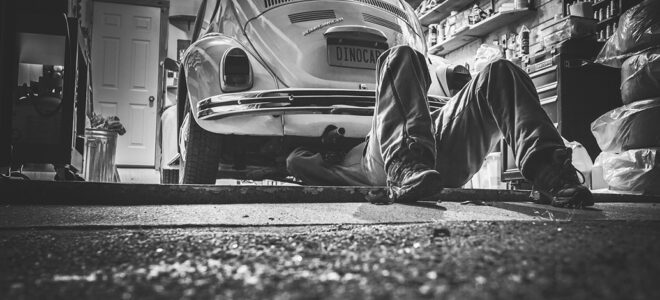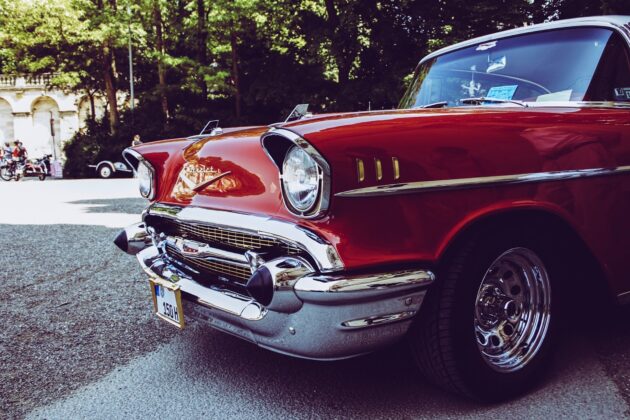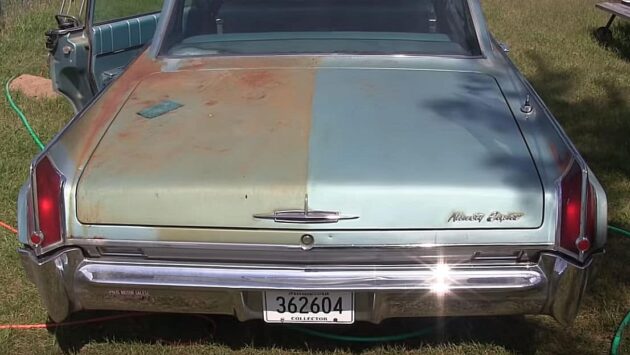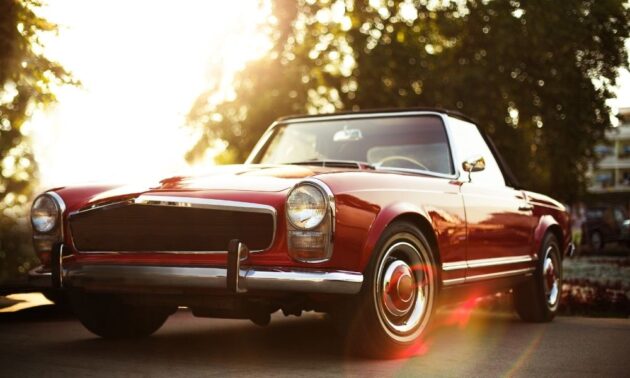
Are you a lover of vintage cars? Do you have a classic vehicle that’s been sitting in your garage, waiting to be restored to its former glory? Restoring a vintage car can be a rewarding and exciting experience, but it can also be a daunting task if you don’t know where to start. That’s where restoration tips come in handy. With the right knowledge and skills, you can bring your vintage car back to life and enjoy the beauty and nostalgia of a bygone era. In this article, we’ll explore some restoration tips that will help you get started on your journey to reviving your classic car. From finding the right parts to choosing the right tools and techniques, we’ll cover everything you need to know to make your vintage car restoration project a success. So, let’s dive in and discover the secrets of bringing vintage cars back to life!
Assessing the Condition of Your Vintage Car

Source: herewetow.co.uk
Before you start restoring your vintage car, it’s important to assess its condition. This will help you determine the extent of restoration needed and the budget required for the project. The first step is to inspect the bodywork, engine, and interior of the car. Look for any rust, dents, scratches, or other damage that needs to be repaired. You should also check for any missing parts or components that need to be replaced.
Next, you should evaluate the car’s mechanical condition. Check the engine, transmission, brakes, steering, and suspension to see if they are working properly. You should also check the electrical system, including the lights, gauges, and switches.
Once you have assessed the condition of your vintage car, you can start planning the restoration process. This will involve creating a list of all the repairs and replacements needed, as well as estimating the cost of parts and labor. With this information, you can create a budget and timeline for your restoration project.
Tools and Equipment Needed for Restoration
Restoring a vintage car requires a wide range of tools and equipment. Some of the basic tools you will need include wrenches, sockets, screwdrivers, pliers, and hammers. You will also need specialized tools for specific tasks, such as a torque wrench for tightening bolts to specific settings, a paint gun for applying paint, and a sandblaster for removing rust.
In addition to tools, you will need other equipment such as a car lift or jack stands for raising the car off the ground, a compressor for powering air tools, and a welder for repairing metal components. You may also need safety equipment such as gloves, safety glasses, and ear protection.
When choosing tools and equipment for your restoration project, it’s important to invest in high-quality products that will last. Cheap tools may save you money in the short term, but they are likely to break or wear out quickly, which can lead to frustration and additional costs in the long run.
Budgeting for Vintage Car Restoration

Restoring a vintage car can be an expensive undertaking, so it’s important to set a realistic budget for your project. The cost of restoration will depend on the condition of your car, the scope of work required, and the quality of parts and labor you choose.
To create a budget, start by estimating the cost of parts and labor. You can do this by creating a list of all the repairs and replacements needed and then researching the cost of each item. You should also get quotes from restoration shops to get an idea of how much labor will cost. For example, customized classic defenders created at ECD Automotive Design takes several hours with over 50+ technicians working on the vehicle for 2 months straight.
Once you have a total cost estimate, add a contingency of at least 10% to cover unexpected expenses. This could include additional repairs or parts that you didn’t anticipate, as well as any cost overruns.
When creating a budget, it’s important to be realistic about what you can afford. Don’t cut corners or choose low-quality parts just to save money, as this will likely lead to additional costs down the road. Instead, prioritize the most important repairs and upgrades and plan to tackle the rest over time.
Finding Parts for Your Vintage Car
Finding parts for a vintage car can be a challenge, especially if you have a rare or unusual model. However, there are many resources available to help you locate the parts you need.
The first step is to search online for parts suppliers and restoration shops that specialize in your make and model. You can also check online marketplaces such as eBay and Craigslist for second-hand parts.
Another option is to join a vintage car club or forum. These groups often have members who are knowledgeable about your make and model and can offer advice on where to find parts. You may also be able to buy or trade parts with other members.
Finally, you can consider fabricating your own parts if you can’t find what you need. This will require some specialized skills and equipment, but it can be a rewarding way to personalize your restoration project.
Cleaning and Removing Rust

Source: m.roadkillcustoms.com
One of the biggest challenges in restoring a vintage car is dealing with rust. Rust can eat away at metal components and cause structural damage if left untreated. To restore your car’s bodywork, you will need to clean and remove rust from the affected areas.
The first step is to clean the surface of the metal with a degreaser or solvent to remove any dirt or oil. Next, use a wire brush or sandpaper to remove as much rust as possible. You can also use a rust converter or neutralizer to stop the rust from spreading.
If the rust is severe, you may need to replace the affected panels or components. This will require welding skills and specialized equipment, so it’s best to leave it to a professional if you’re not experienced in this area.
Bodywork and Paint Restoration
Once the rust has been removed, you can start restoring the bodywork and paint of your vintage car. This will involve filling any dents or scratches with body filler and sanding the surface smooth. You should also prime the surface before applying paint.
When choosing paint, it’s important to select a high-quality product that will provide a durable and long-lasting finish. You should also choose a color that matches the original shade of your car, unless you’re planning to customize the color.
Painting a car requires skill and patience, so it’s best to leave this to a professional if you’re not experienced in this area. A good paint job can make all the difference in the overall appearance of your restored vintage car.
Engine and Mechanical Restoration

Restoring the mechanical components of your vintage car is just as important as restoring the bodywork and paint. This will involve inspecting and repairing or replacing the engine, transmission, brakes, steering, and suspension.
Some of the common repairs needed for vintage cars include replacing worn or damaged bearings, gaskets, and seals, as well as rebuilding or replacing the carburetor and fuel system. You may also need to replace the exhaust system and upgrade the ignition and electrical systems.
When restoring the mechanical components of your vintage car, it’s important to use high-quality parts and follow the manufacturer’s specifications. This will ensure that your car runs smoothly and reliably for years to come.
Upholstery and Interior Restoration
The interior of your vintage car is just as important as the exterior and mechanical components. To restore the upholstery and interior of your car, you will need to remove the seats, carpet, headliner, and door panels.
You can clean and repair the existing upholstery, or replace it with new materials. When choosing upholstery, it’s important to select a product that matches the original style and color of your car. You should also choose high-quality materials that will last.
In addition to upholstery, you may need to repair or replace the dashboard, gauges, and switches. You can also add modern features such as air conditioning or a sound system to enhance the comfort and convenience of your vintage car.
Maintenance and Upkeep After Restoration

Once your vintage car has been restored, it’s important to maintain it properly to keep it in top condition. This will involve regular cleaning and detailing, as well as periodic maintenance such as oil changes and tune-ups.
You should also store your vintage car in a dry, climate-controlled environment to protect it from the elements. Regular use and exercise will also help keep your car in good running condition.
Finally, it’s important to enjoy your restored vintage car and share it with others who appreciate its beauty and history. Attend car shows and vintage car events, and take your car for leisurely drives on scenic roads.
Conclusion
Restoring a vintage car can be a challenging but rewarding experience. With the right knowledge, skills, and tools, you can bring your classic car back to life and enjoy the beauty and nostalgia of a bygone era. From assessing the condition of your car to finding parts, cleaning and removing rust, and restoring the bodywork, paint, engine, and interior, there are many steps involved in vintage car restoration. However, with patience, dedication, and a love for classic cars, you can create a masterpiece that will be admired and enjoyed for years to come.



